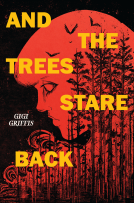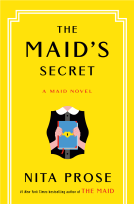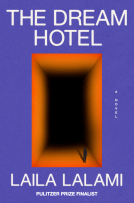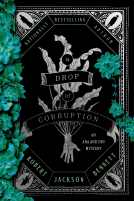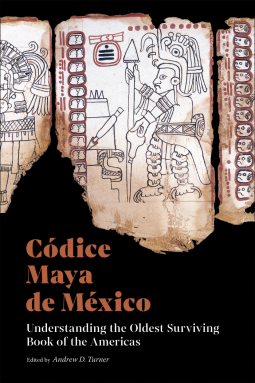
Códice Maya de México
Understanding the Oldest Surviving Book of the Americas
by Edited by Andrew D. Turner
This title was previously available on NetGalley and is now archived.
Send NetGalley books directly to your Kindle or Kindle app
1
To read on a Kindle or Kindle app, please add kindle@netgalley.com as an approved email address to receive files in your Amazon account. Click here for step-by-step instructions.
2
Also find your Kindle email address within your Amazon account, and enter it here.
Pub Date Nov 22 2022 | Archive Date Jan 09 2023
Getty Publications | Getty Research Institute
Talking about this book? Use #CódiceMayadeMéxico #NetGalley. More hashtag tips!
Description
Ancient Maya scribes recorded prophecies and astronomical observations on the pages of painted books. Although most were lost to decay or destruction, three pre-Hispanic Maya codices were known to have survived, when, in the 1960s, a fourth book that differed from the others appeared in Mexico under mysterious circumstances. After fifty years of debate over its authenticity, recent investigations using cutting-edge scientific and art historical analyses determined that Códice Maya de México (formerly known as Grolier Codex) is in fact the oldest surviving book of the Americas, predating all others by at least two hundred years.
This volume provides a multifaceted introduction to the creation, discovery, interpretation, and scientific authentication of Códice Maya de México. In addition, a full-color facsimile and a page-by-page guide to the iconography make the codex accessible to a wide audience. Additional topics include the uses and importance of sacred books in Mesoamerica, the role of astronomy in ancient Maya societies, and the codex's continued relevance to contemporary Maya communities.
This volume is published to accompany an exhibition on view at the J. Paul Getty Museum at the Getty Center from October 18, 2022, to January 15, 2023.
Advance Praise
“These interconnected essays explore astronomical knowledge, bookmaking practices, artistic and scribal conventions, and belief systems at a significant juncture in Mesoamerican history through analysis of the recently authenticated Códice Maya de México. What I found especially compelling were the complementary methodologies and perspectives employed to contextualize this early codex, framing it not only within the cultural context of its eleventh- or twelfth-century creators but also in terms of its significance to contemporary descendant populations working to reclaim their intellectual heritage.”
—Gabrielle Vail, Research Collaborator, Department of Anthropology, University of North Carolina, Chapel Hill
"What a great story: a rare Mesoamerican document, once thought to be a fake and featuring nuanced innovations in the arrangement of its complex astronomical content from a long-regarded archetype, is confirmed half a century later to be the archetype’s historical predecessor. You can't make this stuff up. In this tidy, accessible package, Andrew Turner brings together the story of the physical analysis, historical background, and decipherment of Códice Maya de México—the oldest book in the world of the Maya.”
—Anthony Aveni, Russell Colgate Distinguished University Professor of Astronomy, Anthropology, and Native American Studies Emeritus at Colgate University
“Códice Maya de México promises ‘understanding’ in its title and delivers to the highest degree, with all the lucidity and scholarship to be expected from the Getty Research Institute. After decades of see-sawing disputes—some favoring the authenticity of this document, others not—Andrew Turner and his colleagues have landed at where we should have been at the start, when the book first came to our attention in the 1960s. Arising in a time of cultural interplay, Códice Maya de México shows itself to be the earliest, largely complete tome from Indigenous America. Looking to the heavens, and to Venus in particular, this screenfold (or leporello) indicates how predictable planetary movements were linked in Maya minds to cyclic conflicts between gods. And it does so by muting language and highlighting lists of days unencumbered by more elaborate text. Códice Maya thus served as a supple hybrid. Crosscutting societies, it ‘lived’ between different languages and rituals yet still retained its Maya identity. Códice Maya, a special treasure of the Estados Unidos Mexicanos, has now fulfilled its own manifest destiny by traveling to Los Angeles, a city founded by the precursor of the Mexican republic and a global example today of the benefits of cultural contact. This study and the welcome visit of the codex to the J. Paul Getty Museum provide unrivaled pleasures to all who care about the power of books and what happens when societies collide, mesh, and—as a direct result—strengthen.”
—Stephen Houston, editor of A Maya Universe In Stone
Available Editions
| EDITION | Other Format |
| ISBN | 9781606067888 |
| PRICE | $24.95 (USD) |
| PAGES | 96 |
Links
Featured Reviews
 Reviewer 2883
Reviewer 2883
Thank you Netgalley and Getty Publications for access to this arc.
A few years ago, I watched a documentary called "Breaking the Maya Code" (made in 2008) that discussed how the glyph writing of the Maya language was finally cracked. It also briefly discussed the three Maya codices (now all in Europe) and one that had been discovered in the mid 1960s and which had - at that point - not conclusively been authenticated. When I saw this book I wondered if it was about that last codex, the one supposedly found in a cave and that had left Mexico under fishy circumstances before being returned and that had first been denounced as a fake only for later scholars to argue with that assessment.
Yes, the book is about that codex. The one that some said couldn't have survived for hundreds of years in a cave. The one that we still don't know exactly where it was found or by whom. The one that has been studied and subjected to more scientific examinations than any other Mesoamerican codex. The one whose authentication was determined by a vibrant color paint called Maya Blue, all the ingredients of which still hadn't been totally elucidated in the mid 1960s meaning that forgers couldn't have known how to mimic it.
Several authorities contributed to the book. We learn about the reason for it - to describe a 104 year cycle of the planet Venus which the ancient Maya astronomers correctly knew was one planet instead of two different ones. We learn about all the scientific experiments done on it. There is a wonderful chapter written by a modern descendent of the Maya whose course of study was determined by his fascination with it and determination to learn to read the language of his ancestors. The final chapter describes in detail the meaning of each of the surviving pages. And since this is being produced by the J. Paul Getty museum for an exhibition of the codex there, it's filled with wonderful photographs. If I were going to be in Los Angeles during its stay, I'd be lining up to see it but this book is a fair substitute for that experience. B+
I found this book interesting and I learned a lot. It is a short book with three essays about the Codice Maya de Mexico and a chapter on how to read it. The first essay includes a lot of astronomy and the technical purpose of the Codice. The second essay was about the archeological evidence and lack of evidence including all the tests conducted to prove the authenticity and the travels the Codice has made. The third essay was my favorite. It described the cultural importance of the Codice and how important it is to the Maya. At the end there are illustrations and show how to read it. Overall this a nicely presented book about the oldest surviving book of the Americas.
 Josie S, Reviewer
Josie S, Reviewer
In the book Códice Maya de México Andrew D. Turner has assembled several essays together which provide detailed insight into the oldest surviving pre-Hispanic book produced in the Americas. It is an engaging read providing fascinating information about the not only the history and study of a particular archaeological object, but also presents a rich exploration of the culture and practices of the people who produced and used it. The material covering the authentication process and descriptions of the modern techniques used to analyse the document with nondestructive methods was interesting and informative.
The images and explanations of the Codice included at the end of the book are fascinating and instructive.
Thank you NetGalley and Getty Publications for the ARC of this book in exchange for my honest review.
Very interesting read. I enjoyed learning the history of this Mayan codex. However, the section concerning the testing done on it was a little too scholarly for me. Reading it is not the same as seeing it done in a documentary. But again...a very interesting read,
Thanks to NetGalley for this advanced copy, which I voluntarily read and reviewed.
 Reviewer 862825
Reviewer 862825
Short, but full of fascinating detail, Códice Maya de México: Understanding the Oldest Surviving Book of the Americas provides a full exploration of the most recently discovered fourth surviving book of the Mayas. The other volumes are held in Europe and named for the cities where they currently reside. The Códice Maya de México demonstrates a culture barely saved from erasure by European colonialism.
Presented here are a collection of separate essays. The reader learns of the Mayas and their culture, with a special focus on astronomy and books; the re-discovery of this volume, scientific analysis of the pigments and other materials compromising the book and a full translations of the surviving content.
As one would expect from the Getty, the images are exemplary, particularly in providing supplemental evidence when discussing the findings of the scientific analysis. The volume also includes a full color facsimile.
An interesting collection of interpretations of Mayan artifacts and inscriptions. Perfect for the history buff and story teller. Gives a glimpse into the minds of the ancient Mexicans.
Códice Maya de México: Understanding the Oldest Surviving Book of the Americas, edited by Andrew D Turner, is a fascinating look at both the text and the early history.
While I admittedly come to books like this largely for the photographs and just enough information to understand them, I love when a book gives more space than expected to text, especially when the text is interesting. This is one of those books. The essays offer a more rounded view of the physical processes and intellectual foundations that went into the creation of this amazing work. I am so glad the Getty Museum and Research Institute gave more than just a cursory explanation of the Códice, it truly helped me to better appreciate what I was looking at.
If you're mostly interested in the images, you won't be disappointed. You can "read" the text and skip the essays that explain the history and the authentication processes. But I am guessing you'll be compelled to go back and read them anyway, it makes the "reading" that much more enjoyable.
Highly recommended for anyone with an interest in ancient history, particularly of the Americas. Those with an interest in early science as well as contemporary dating procedures will find a lot to enjoy.
Reviewed from a copy made available by the publisher via NetGalley.


